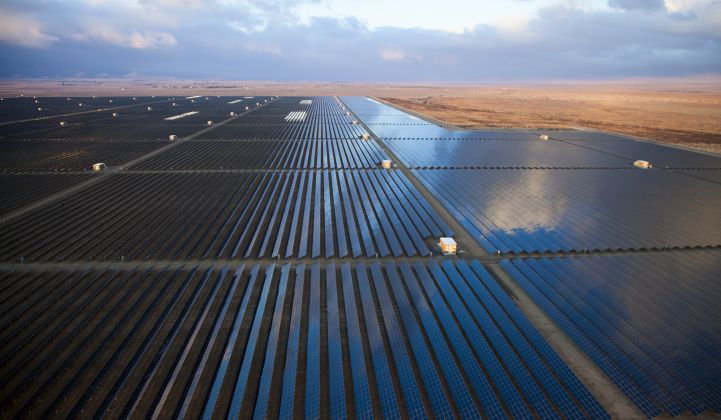The solar industry will require $7 billion to $8 billion of tax capacity from external investors in 2020, according to a new Wood Mackenzie research insight. But the competition to secure that investment is tighter than ever.
Tax equity for solar projects has gotten a lot of attention this year. When the coronavirus pandemic first hit, there was widespread concern that an economic downturn would result in less tax equity being available for solar projects. The biggest investors in the space, such as JPMorgan, Bank of America and U.S. Bank, would have less tax liability to dedicate to solar investments.
But the full story is more nuanced. Less tax equity being available for projects is certainly a concern. But heightened competition for tax equity and a growing solar industry are the more critical drivers.
It’s not all about less tax liability
As the end of 2020 approaches, solar developers are reporting that the lower levels of tax equity available from major investors are slowing down deals.
Of course, the total tax liabilities of the major solar tax equity investors dwarf the $7 billion to $8 billion required by all the solar projects coming online this year. But these investors typically allocate a certain amount of tax equity to any given investment. And in the current economic climate of 2020, that allocation is experiencing more pressure than ever.
Utility solar is forecast to grow by 66 percent this year compared to 2019. Investors are reporting that more deals are coming across their desks than ever before. In conversations with Wood Mackenzie, one even likened it to “drinking from a fire hose.”
The economic climate this year has also limited the number of new investors entering the market, with Franklin Park the only new investor this year, according to kWh Analytics’ Lendscape. If it weren’t for the pandemic, more investors might have entered the market, in keeping with the trend of the last several years.
Without new market entrants, tax equity supply growth has not kept up with solar market growth. That has constricted the tax equity supply available to developers.
As solar expands, investor time is at a premium
Conducting due diligence and vetting credit requirements takes substantial staffing time, which was in tight supply this year, particularly at the peak of economic panic during the second quarter. This means that investors are prioritizing only the most favorable solar projects to the detriment of commercial solar and projects that carry more merchant risk.
Given these circumstances, Wood Mackenzie expects a few key impacts for solar tax equity going forward:
• Tax equity investors now heavily favor larger transaction sizes: Anything below $50 million to $75 million is likely going to be a tougher sell. This has already made it harder for smaller commercial solar sponsors to source external tax equity capital.
• Competition for tax equity within utility solar is more intense: Tax equity investors are able to select for the highest-quality projects and are more likely to reject deals with higher levels of merchant risk or weaker financials.
• Bankability is everything: Tax equity investors are prioritizing projects with reputable, bankable sponsors, particularly if they have already done business together.
Wild card: The November election
Naturally, an increase in the corporate tax rate would increase solar tax equity investors' tax liabilities.
If Joe Biden wins the U.S. presidential election and his administration successfully increases the corporate income tax rate from 21 to 28 percent, as has been suggested by the campaign, more major investors would be amenable to increasing their solar tax equity investments.
If Biden wins the election and the Democratic Party wins a majority in the Senate, there would also be more momentum behind various proposed changes to the federal Investment Tax Credit. One potential scenario could see the ITC modified to a “refundable” credit that would go directly to the sponsor, reducing the need for sponsors to monetize the tax benefits through external tax equity investors.
There are still many unknowns associated with both of these policy proposals, however.
Market balance is in the future
Regardless of the election outcome, the high-level trend is clear: After the short-term crunch, solar tax equity will likely become less important for solar project financing starting in 2022.
As the ITC decreases, companies deploy limited safe-harbored equipment and solar costs continue their downward trend, demand for solar tax equity will decrease.
The era of tax-credit monetization dictating solar project financing is slowly drawing to a close.
***
Michelle Davis is a senior solar analyst at Wood Mackenzie and author of the research insight "Solar tax equity in 2020: Clarifying the constraints."




